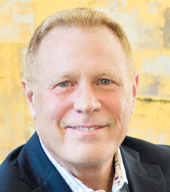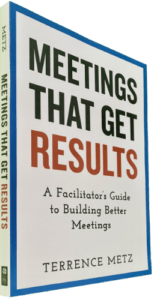Recently on a blog, an informal group of mathematicians solved a tough and long-standing mathematics problem in a few weeks. Additionally, an MGRUSH alumnae wrote about preparing for an executive workshop and how to facilitate Europeans and Asians between two different companies.
The following captures considerations on how to facilitate scientists, as well as considerations on how to facilitate Asians and Europeans.
First, How to Facilitate Scientists
The virtual session leader (Tom Gowers) used his blog to post ideas and progress. He encouraged others to contribute, expecting many minds to be more powerful than his alone. Within an hour of his first posting, three people scattered around North America commented, and six weeks later, the problem was solved. Here is an example of an ever-increasing body of scientists who have used networking to solve complex problems and to speed up the delivery of answers and options.
Value Derives When You Facilitate Scientist Because Nobody Is Smarter than Everybody
Whether you provide a structured workshop method or online tools to amplify collective intelligence, nobody is smarter than everybody.
Linking scientists together, face-to-face or virtually, can dramatically speed up the rate of discovery. Empirical evidence shows that more options (ie, discovered) lead to higher-quality decisions. Some argue that crowdsourcing results are so profound that life as we know it will fundamentally change over the next few decades. When you facilitate scientists, more is clearly better.
To facilitate scientists, provide them with a method and effective methods are dependent on neutral facilitation. They also need a deliverable that will not threaten their independent research, findings, and publications.
Why Wikis Fail
Corporate wikis rely on an environment of sharing and collaboration. When wikis fail, it is frequently attributable to weak or non-existent moderation (i.e., facilitation). In your organizational or corporate environments with a shared holarchy and sense of purpose, scope, and objectives, facilitation is frequently the only missing ingredient to breakthrough thinking and innovation.

To Facilitate Scientists, Provide Methods and Do Not Threaten Them
Eventually, we’ll come to realize that humanity sits atop our holarchy, and with an effective facilitator and collaborative environment, discover that no problem is too complex to solve. Keep in mind that there are only three reasons why groups fail:
- They don’t have the proper talent,
- They don’t have the right attitude (i.e., apathetic or don’t care),
- or, They don’t know how (to succeed as a group)
The professional MGRUSH technique leads the HOW TO effort. Combined with an appropriate method, our talented scientists are capable of “Reinventing Discovery: The New Era of Networked Science” (a book by Michael Nielsen, a pioneer in the field of quantum computing).
Next, Considerations to Facilitate Asians and Europeans
The alumnae’s two different companies required a strategy document of their alliance to work with each other in a common supply chain. Specifically, the alumnus inquired about anything in particular to avoid or encourage.

Facilitate Asians and Europeans
Specific Solution on How to Facilitate Asians and Europeans
Speak with the participants to confirm their explicit expectations and then manage accordingly. When conducting confidential, one-on-one interviews, participants will speak more openly about “anything in particular to avoid or encourage.”
Basic Considerations on How to Facilitate Asians and Europeans
- Icebreakers: Consider icebreaker activities that allow participants to share some of their social values, such as asking about a favorite childhood memory or describing their favorite holiday (i.e., vacation) destination and activities.
- Names: An effective facilitator will NOT use people’s names, but rather substitute open hands and eye contact to draw in participation and to pass the talking stick. During breaks and social times, or when discussing administrivia such as evening plans, strive to use people’s last names and titles, including respect toward academic and medical titles. During private introductions, handshakes are a reasonable default standard, perhaps with a slight bow—avoid hugging, arm humping, and shoulder thwacking as too much physical contact.
- Protocol: Emphasize the difference in roles. For example, we treat our parents differently than we treat our children. We may treat customers differently from suppliers. During the workshop, emphasize leaving titles and roles on the other side of the threshold so that everyone has permission to speak freely. When the Joint Chiefs meet, they may wear sweaters over their military stars, so that four-star generals do not claim superiority over three-star generals in a workshop environment. If the armed forces can encourage equality of voice, so can we.
- Punctuality: Punctuality is important. Keep your stated promises about when to start, including after breaks and meals. If not, your broken promise will frustrate participants and cause some to challenge the integrity of the session leader. If the session leader claims punctuality but permits a delayed starting time, they may be seen as someone who cannot be trusted. Be sure to use MGRUSH timers to get people to return from breaks and start on time. If necessary, offer a ten-minute break every fifty minutes, but start on time.
Additional Considerations on How to Facilitate Asians and Europeans
- Rhetoric: Avoid slang, colloquialisms, and American jargon. It is not uncommon for Europeans and Asians to speak in English and understand each other better than an American. While facilitating and providing reflection, stick closely to verbatim words and expressions rather than “interpreting.” If the participants felt there was a better term or expression, they would have used it the first time. Unless the participant asks for language assistance, be patient and avoid volunteering content, unless asked.
- Breakout Groups: Use breakout groups frequently during the agenda, especially during the ideation step within brainstorming. Plan your break-out sessions based on knowledge from interviews. Appoint a CEO (i.e., chief easel officer) for each group. Strive to creatively assign group titles or names that harmonize with the theme of the workshop (e.g., star constellations). Simply calling out 1,2, 3 indicates that the activity was not important enough to plan further. Understand methodologically that sometimes it is appropriate to create homogenous groups (i.e., think alike) and other times it may be advantageous to create heterogeneous groups (i.e., embrace pluralism).
Commonalities to Facilitate Scientists or to Facilitate Asians and Europeans
Be certain to secure pre-meeting buy-in about the purpose, scope, and deliverables of the workshop. Ideally, explain your agenda through a metaphor or analogy. Next, ensure that the method will engage the participants and not drag on and bore them. If you keep them engaged and focused, you will clearly have made it easier for them to build and decide. Do not discount the importance of a formal review and wrap-up. Plan on an approach the group accepts in advance to manage action steps or roles and responsibilities. Invest some time in the MGRUSH Guardian of Change so that they agree on their primary messaging to other executives and stakeholders at the conclusion of the workshop. Moreover, be sure to obtain some feedback on your performance, so that you may continuously improve your talents as an effective, facilitative leader.
______
Don’t ruin your career by hosting bad meetings. Sign up for a workshop or send this to someone who should. MGRUSH workshops focus on meeting design and practice. Each person practices tools, methods, and activities every day during the week. Therefore, while some call this immersion, we call it the road to building high-value facilitation skills.
Our workshops also provide a superb way to earn up to 40 SEUs from the Scrum Alliance, 40 CDUs from IIBA, 40 Continuous Learning Points (CLPs) based on Federal Acquisition Certification Continuous Professional Learning Requirements using Training and Education activities, 40 Professional Development Units (PDUs) from SAVE International, as well as 4.0 CEUs for other professions. (See workshop and Reference Manual descriptions for details.)
Want a free 10-minute break timer? Sign up for our once-monthly newsletter HERE and receive a timer along with four other of our favorite facilitation tools, free.
Related articles
- Lockheed Martin Installs Quantum Computer (forbes.com)

Terrence Metz, president of MG RUSH Facilitation Training, was just 22-years-old and working as a Sales Engineer at Honeywell when he recognized a widespread problem—most meetings were ineffective and poorly led, wasting both time and company resources. However, he also observed meetings that worked. What set them apart? A well-prepared leader who structured the session to ensure participants contributed meaningfully and achieved clear outcomes.
Throughout his career, Metz, who earned an MBA from Kellogg (Northwestern University) experienced and also trained in various facilitation techniques. In 2004, he purchased MG RUSH where he shifted his focus toward improving established meeting designs and building a curriculum that would teach others how to lead, facilitate, and structure meetings that drive results. His expertise in training world-class facilitators led to the 2020 publication of Meetings That Get Results: A Guide to Building Better Meetings, a comprehensive resource on effectively building consensus.
Grounded in the principle that “nobody is smarter than everybody,” the book details the why, what, and how of building consensus when making decisions, planning, and solving problems. Along with a Participant’s Guide and supplemental workshops, it supports learning from foundational awareness to professional certification.
Metz’s first book, Change or Die: A Business Process Improvement Manual, tackled the challenges of process optimization. His upcoming book, Catalyst: Facilitating Innovation, focuses on meetings and workshops that don’t simply end when time runs out but conclude with actionable next steps and clear assignments—ensuring progress beyond discussions and ideas.


